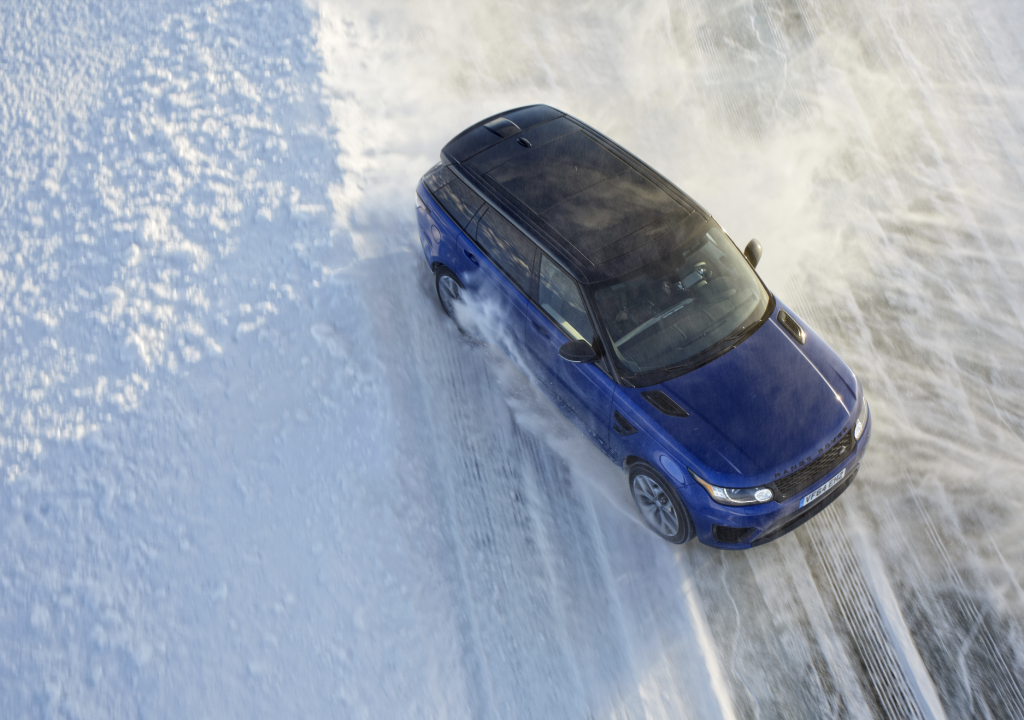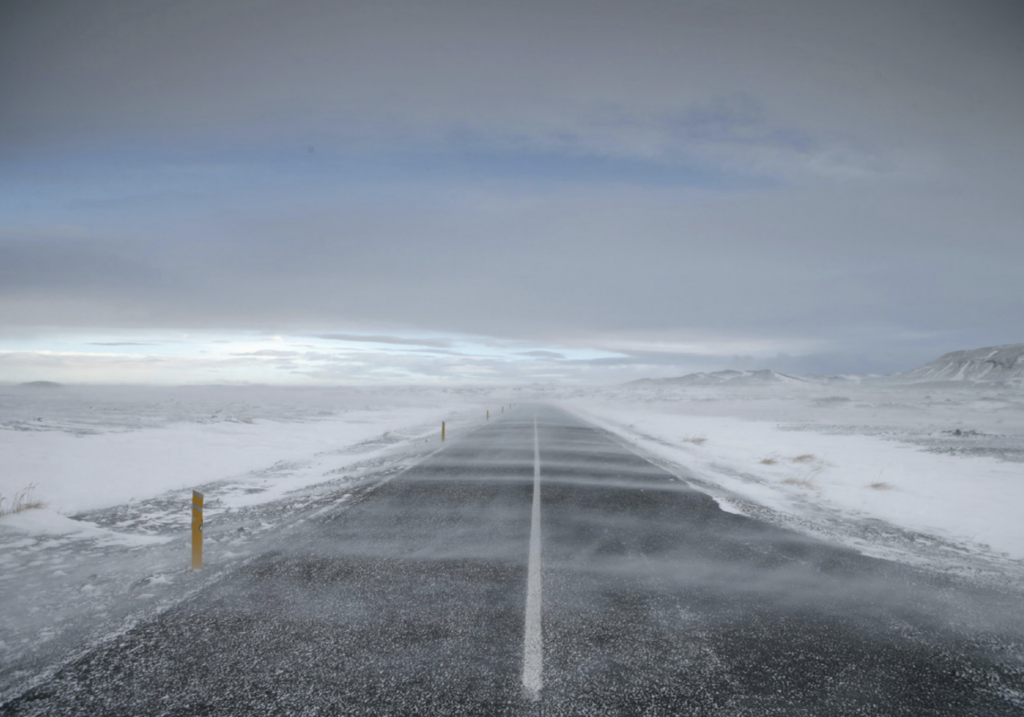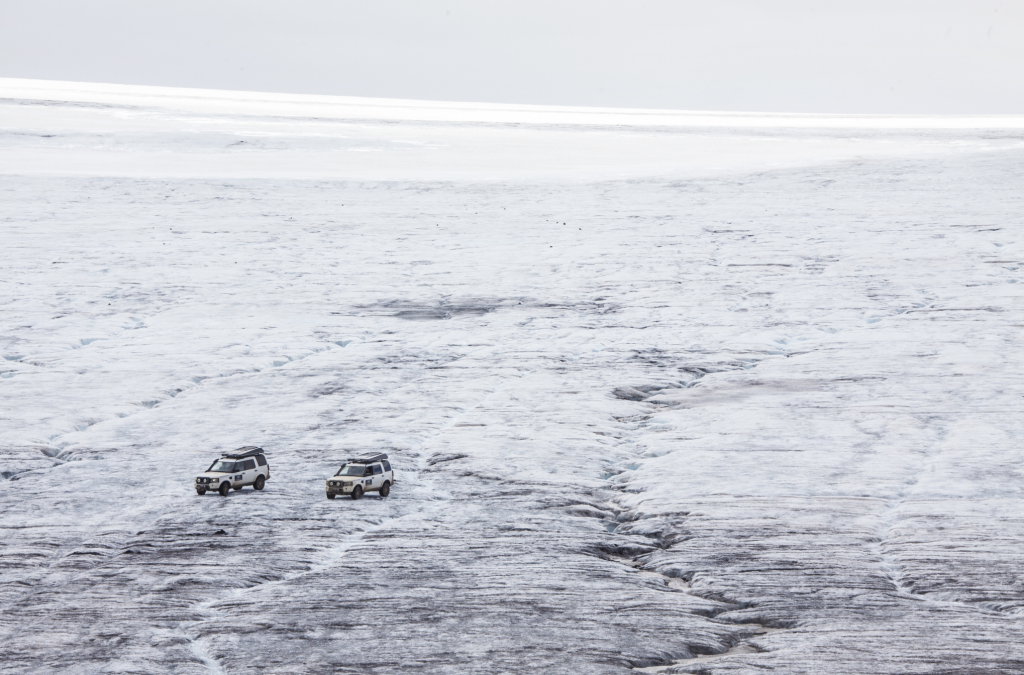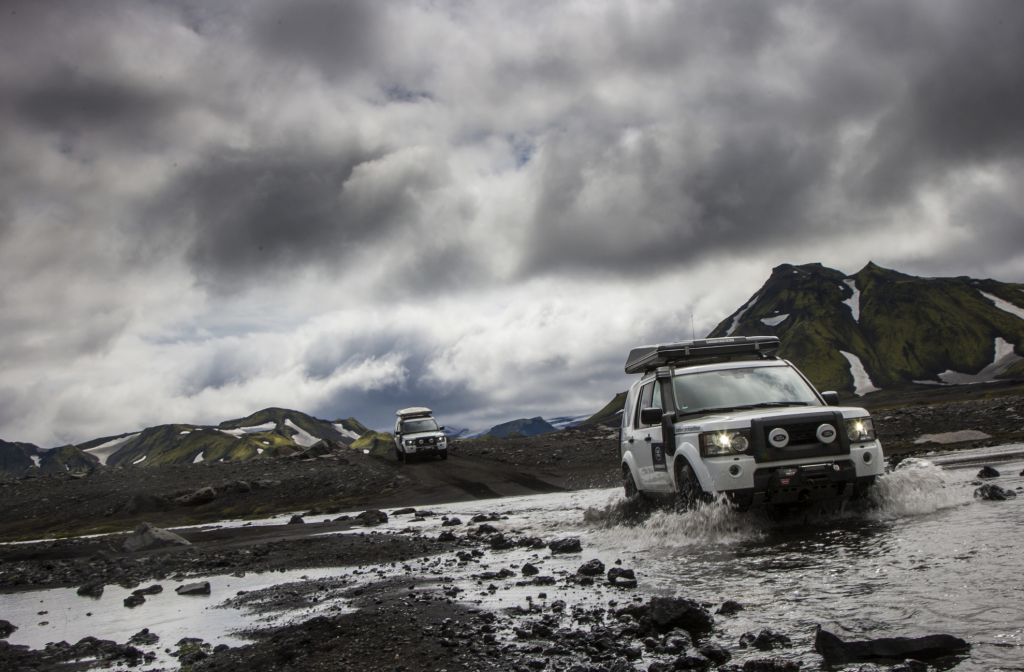Ice
Be sure to clear your windscreen completely before driving. When moving off on packed ice, try using a higher gear. Keep your speed down and allow significantly greater stopping distances. Remember that, in frosty weather, bridges and overpasses ice over more quickly than normal roads. Shadows from trees, buildings and mountains can also cause unexpected icy spots. If you do skid, keep your hands on the steering wheel, avoid hard braking and steer into the skid. So if the rear of your car is sliding to the left, steer left. And vice versa. Black ice is often invisible, making it particularly dangerous. If you suspect roads to be very icy, only drive if absolutely necessary.

Snow
Before you start your journey, remove any snow from the roof of your car. This will prevent it being shunted onto your windscreen if you brake sharply. When moving off, accelerate gently and change to a higher gear as soon as you can. On roads that haven’t been gritted, be aware that tracks from other vehicles will be icier and more slippery than fresh snow. If you get stuck: straighten the steering, then get out of the car and clear the snow from your wheels. If you have traction aids, use them to give the tyres more purchase.

Fog
Make sure headlights, and fog lights, are working properly before you drive. The Highway Code states that headlights must be used when visibility is less than 100 metres. Fog lights are different from full-beam headlights. They project a beam which is very wide, but not tall or far reaching. This beam lights a path close to the road surface, but not the airborne particles in your sightline; therefore reducing glare and increasing visibility. Use the two-second rule for leaving a gap between you and the vehicle in front. Don’t rely on the tail lights of the car in front for navigation, you may suddenly end up much closer than intended. If visibility is very poor, lower your window at junctions or crossroads and listen for approaching traffic.

Hail
If you encounter a bad hailstorm, pull over if possible, ideally under shelter to help prevent windscreen or window damage. Stay inside the vehicle as hail can cause injury. Try to angle your car so that the hail is hitting the windscreen, not the side or rear windows. Windscreen glass is stronger and can withstand more force. Avoid ditches, in case of fast-rising water levels.

Floods
Always prioritise safe driving. As a general rule, don’t drive into water unless you really have to. Try to work out how deep the water is. In static shallower water, explore on foot and use a stick to gauge the depth – or watch another vehicle go through. It’s a good idea to keep a pair of wellies or waders in the boot. If there are other vehicles ahead, wait until they’ve left the water. Unsettled water can make a safe passage more challenging. Enter the water slowly and build up momentum. Do not slip/ride the clutch as this reduces control of the vehicle. Ease off the accelerator as you reach the other side of the water. It’s a good idea to make a mental note of your vehicle’s maximum wading depth.

Land Rover Winter Driving Technology
Terrain Response Land Rover’s pioneering technology optimises settings to give a combination of traction, agility and control that best suits the terrain.
When driving in snow or ice, select the Grass/Gravel/Snow setting and use the highest gear possible for the conditions.
Terrain Response 2 Adds an automatic mode which uses sophisticated systems to analyse live driving conditions and select the most suitable programme.
All-Terrain Progress Control (ATPC) This innovative technology acts as a launch control system on slippery surfaces, ensuring composed progress at an exact speed set by the driver.
Hill Descent Control (HDC) Takes the guesswork out of steep, slippery slopes by automatically braking to maintain a steady speed.
InControl Protect In the unlikely event of a breakdown, InControl Protect can transmit your location and vehicle diagnostics data to Land Rover assistance, who’ll have you back on the road in no time.
Winter Wiper Mode Land Rover’s Winter Park feature puts wipers into a raised resting position, to stop them freezing to the windscreen in frosty weather.
ABS and Electronic Brakeforce Distribution Should you have to brake hard in an emergency, Land Rover’s driver assist features will help. Just keep your foot hard on the brake pedal; the system will automatically apply and release the brakes.